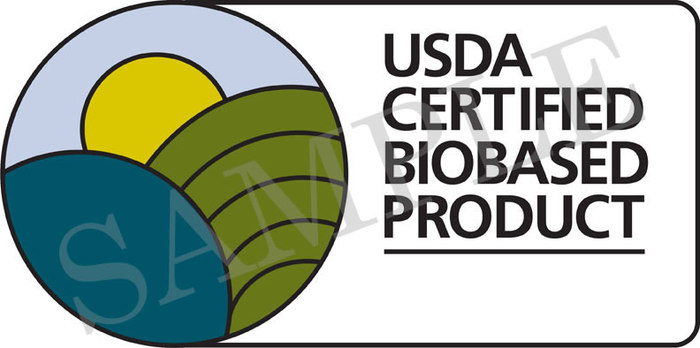USDA Biopreferred Program: How biobased materials add value to products

The United States Federal Government spends around $445 billion annually on goods and services. Thanks to the USDA’s Biopreferred program, originally enacted in 2002 and strengthened in 2008 and again in 2014, federal agencies are now mandated by law to explore ways to source at least some of those goods from biobased materials.
For manufacturers, this program represents a massive opportunity to increase sales by helping the federal agencies seeking ways to comply with the new rule. Given the purchasing power of the Federal Government and its numerous agencies, modifying the raw materials used in the manufacturing processes represents a promising way to capitalize on a market that now must exist by law.
And for consumer goods in a wide range of product categories, including everything from lubricants to building materials, the program offers an opportunity for products to become intricately linked with sustainability.
What is the USDA’s Biopreferred program and how does it work?
Tasked with creating a program that would transform the market for biobased goods and create jobs in rural America, the USDA developed a program that would help it to meet two main strategic goals: advance the biobased product market and increase the purchase of biobased products government-wide.
Executive Order 13693, Planning for Federal Sustainability in the Next Decade, is the enforcement mandate responsible for ensuring accountability on the part of government agencies in achieving the goals of the Biopreferred program. In 2005, six product categories were designated as targets for the program. It has since grown to 97 product categories with approximately 14,000 products now included in the mandatory federal purchasing initiative.
Beyond government purchasing, though, the program also includes a voluntary labeling initiative that allows manufacturers to receive a USDA-certified biobased product label upon third-party verification of the product’s contents. This allows private consumers the ability to compare and choose products that are certified to contain a percentage of renewable products and are less impactful on the environment than those made completely from petroleum-based feedstock.
To qualify for the program, manufacturers of goods are able to apply for Biopreferred certification online. From there, they can track their application status through the same site until a ruling is made on its eligibility.
A sweeping, multidisciplinary report on the Biopreferred program by faculty at Duke University and North Carolina State University examines the anticipated economic and environmental outcomes of the program and is well worth the time of manufacturers interested in exploring the program further. It contains in-depth analysis of the program broken down by industry, as well as examples of successful applications from companies including John Deere, Coca-Cola and Patagonia.
Becoming Biopreferred with Green Dot
In making products eligible for mandatory federal purchasing initiatives, as well as by increasing a product’s image for the consumer, the USDA’s Biopreferred program offers manufacturers an opportunity to add real value to their products by modifying what they’re made from. (If you’re still dubious about whether consumers want a greener product or whether executives value sustainability, here are some figures for you.)
Before you start to think it’s impossible for your product or simply not feasible from a cost-effectiveness standpoint, you should know that we solve these sorts of problems all the time. It’s what we do.
Our certified bioplastics have been successfully applied to a wide range of applications, and their effectiveness is only limited by the imaginations of those who seek to utilize them. We specialize in working with manufacturers to understand their processes and how our materials can accommodate them. In most cases, the manufacturing process is not severely affected, as many of our biobased materials behave remarkably similarly to traditional plastic feedstock.
So as the price of bioplastics continues to close the gap with petroleum-based materials in terms of price, and serious benefits emerge for products able to earn Biopreferred status, exploring whether bioplastics are the right option for your product is well worth considering.
We’d love to talk with you about options for introducing biobased materials to your manufacturing process. Reach out to us to schedule a consultation and we’ll be in touch with you to discuss getting your product Biopreferred.


